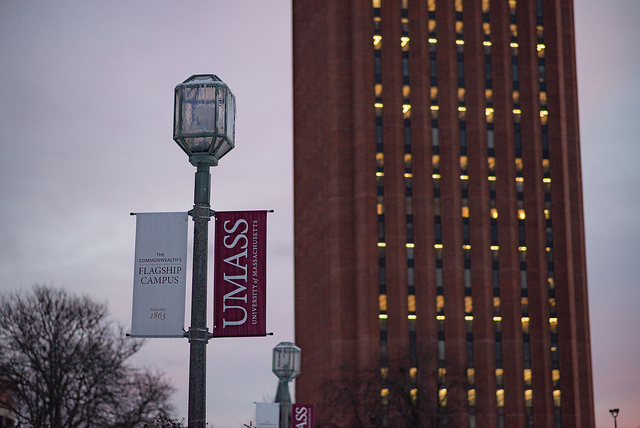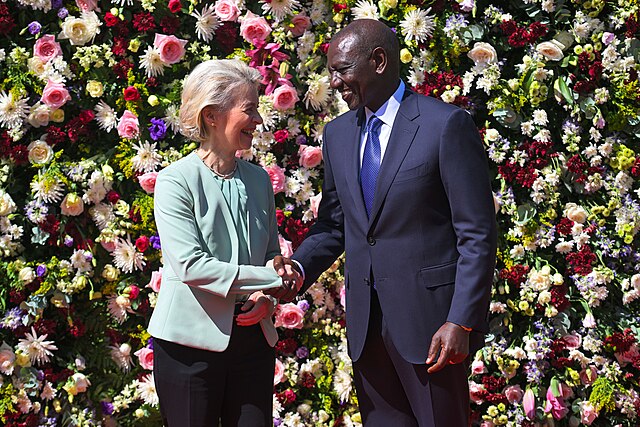The ongoing admissions lawsuits against Harvard University and the University of North Carolina have rekindled the age-old debate surrounding affirmative action. Today, nearly 60 years since this policy was first implemented, its objectives and execution are often at odds with each other.
The moral argument frequently made to justify affirmative action is that to set right racial injustices of the past, society must provide a leg up to historically marginalized communities. Yet a policy claiming to uplift minorities can hardly justify its treatment of Asian Americans, who on average have to score 140 points higher on the SAT than white students, 320 points higher than Hispanic students, and 450 points higher than African-American students to gain entry into the same institution. Do the descendants of Chinese indentured laborers not deserve compensation? Granted, SAT scores aren’t the only thing taken into consideration during the admissions process, but they certainly are the most reliable predictor we have. Thomas Espenshade at Princeton University revealed that if other things are equal, applicants who present higher SAT scores have a clear advantage in the competitive admissions process. The odds of being admitted for candidates whose scores are 1500 or higher are more than 60 times greater than the odds for applicants whose SAT scores are below 1000.
Next, people argue that minority students tend to hail from poorer neighborhoods, and consequently have scarce access to quality education. I am all for granting a leg up to the financially underprivileged, but I do not see why race should be the deciding factor here. The assertion that minority status is the exclusive marker of poverty is belied by the underrepresentation of some minority groups, such as Asian Americans, amongst the poor. If helping poor students truly is our motivation, then let’s explicitly reward students who have overcome disadvantaged financial beginnings, irrespective of their race.
Then comes the diversity argument, which remodels the very purpose of a university as preparing students for a pluralistic society by immersing them in a diverse student body. Herein lies the patronizing assumption that minority students couldn’t possibly enter elite institutions without the crutch of racial quotas. In fact, after California outlawed the consideration of race in university admissions in 1996, diversity in the UC system went up. By 2010, the number of African-American admits increased by 50 percent, Latinos grew from 15.4 percent to 23 percent of the entering freshman class and Asians similarly rose from 29.8 to 37.47 percent. Besides, why must the formulation of a diverse student body be a function of race alone? Surely, all that an applicant has to offer cannot be reduced to their skin color. Were that true, then everyone belonging to the same race would be identical in their disposition. Professor Ilya Somin points out the obvious flaw in this notion – “Students labeled ‘Asian American,’ seemingly include individuals of Chinese, Japanese, Korean, Vietnamese, Indian and other backgrounds comprising roughly 60 percent of the world’s population… It would be ludicrous to suggest that all of these students have similar backgrounds and similar ideas and experiences to share.”
Perhaps one could look past these shortcomings of affirmative action for the good it has done to those whom it was afforded. The harsh reality, however, is that this policy has often harmed the very students it sought to help. In 2009, 84 percent of Black and 66 percent of Hispanic students had test scores below their institutions’ averages. By mismatching students to universities that don’t align with their caliber at the time of admission, affirmative action sets them up for failure. Dr. Thomas Sowell pointed out that in 1987, of all the Black students admitted to UC Berkeley under affirmative action, more than 70 percent failed to graduate. The median SAT score for Black students in that entering freshman class was 952 while for whites and Asians, the median scores were 1014 and 1254, respectively. Despite this wide variation, every group’s median SAT score was well above the national average. In short, students in that entering class who failed to graduate from Berkeley were perfectly capable of graduating from any average American college.
Moreover, as pointed out by Richard Sander and Stuart Taylor, because of this mismatch, racial preference policies often stigmatize minorities, reinforce pernicious stereotypes and undermine the self-confidence of beneficiaries, rather than creating the diverse racial utopias so often advertised in college campus brochures. A recent study from the Chronicle of Higher Education found that affirmative action may be causing increased academic pressure for minorities at elite colleges, as well as worsening social stigma. It states, “if white students believe that many of their Black peers would not be at a college were it not for affirmative action and, more important, if Black students perceive whites to believe that, then affirmation action may indeed undermine minority-group members’ academic performance by heightening the social stigma they already experience because of race or ethnicity.” Former first lady Michelle Obama too pointed to this in her recent memoir, recounting that during her time at Princeton, affirmative action was a constant elephant in the room. “You could almost read the scrutiny in the gaze of certain students and even professors,” she writes.
As I see it, holding students to differing admissions standards in the name of fulfilling diversity checkboxes only perpetuates the false narrative that race is in any way related to intellect. Justice Antonin Scalia conveyed this point most convincingly: “The difficulty of overcoming the effects of past discrimination is as nothing compared with the difficulty of eradicating from our society the source of those effects, which is the tendency — fatal to a Nation such as ours — to classify and judge men and women on the basis of their country of origin or the color of their skin. A solution to the first problem that aggravates the second is no solution at all.”
The call for affirmative action stems from a reasonable concern – why doesn’t the ethnic makeup of higher education institutes more faithfully replicate that of society? However, just as you can’t cure an ailing tree by simply chopping off its branches, group disparities in access to education arise early on and cannot be solved by simply granting superficial dispensations.
Bhavya Pant is a Collegian Columnist and can be reached at [email protected].




















NITZAKHON • Jan 29, 2019 at 7:02 pm
Here’s one of the 20th century’s greatest minds, Dr. Thomas Sowell, on racism:
http://jewishworldreview.com/cols/sowell012919.php3
Lessons From the Past
And his colleague, another stellar titan, Professor Walter E. Williams:
The Worst Enemy of Black People
http://jewishworldreview.com/cols/williams010219.php3
What minorities today experience is a barest fraction of the racism that, regrettably, was in America’s past. Stop whining you pathetic losers, suck it up, and get to work.
Here’s the dirty little secret: most whites don’t care about race. It’s when you grievance-mongers shove race in our face that we start to care. It’s when you don’t make it, and instead of trying again, or examining what you did wrong, you whine whine whine.
NITZAKHON • Jan 27, 2019 at 9:19 pm
The author might well read Walter E. Williams (a black man) and his excellent compilation of essays which, among many other things, thoroughly destroy the idea of affirmative action:
American Contempt for Liberty (Hoover Institution Press Publication)
https://amzn.to/2B8H8IG
and
Race & Economics: How Much Can Be Blamed on Discrimination? (Hoover Institution Press Publication)
https://amzn.to/2Mzoi1H
Also, read Dr. Thomas Sowell, one of the greatest minds of the 20th century (and a black man as well):
Discrimination and Disparities
https://amzn.to/2uk1wDc
pete most • Jan 22, 2019 at 11:29 pm
One supreme court justice’s opinion isn’t authoritative lol, supreme court opinions hardly matte on the basis of wisdom or as if they are authoritative; supreme court judges aren’t democratically elected and it’s the same supreme court that liberals rail against as “racist”.
The fact is affirmative action is outright racist and Maria is blatantly both racist and sexist against white men. If she was truly concerned about meritocracy or fairness she would point out deficiencies in all races and also white women. Two wrongs don’t make a right and racism to solve racism will only breed more racism. Also affirmative action is anti-meritocracy; case in point college. Few african-american or hispanic applicants get in on merit and it’s both wrong and unfair qualified applicants are booted out.
Liberals are dogmatic and only see their opinions as ‘right’ and all others as wrong. A truly open academic community would debate both if affirmative action is right or not and also be open to debate dismantling it. There is also a question of how colleges are abusing taxpayer’s money and student’s tuition to force diversity. There is actually a newspaper article in the Campus reform about how the school hires minorities over other qualified candidates. it’s a sad thing because it’s not only going to hurt our education but also in the long mediocre teachers and employees will diminish the school’s reputation. google ” UMass: Qualified faculty candidates must be ‘appropriately diverse’ ”
Unfortunately liberals and ironically mostly white liberals (as the former democrats did who for a long time were extremely racist, fought against slavery and the civil rights act) are for affirmative action and other forms of racism but minorities like Asians are fighting against it. Since it is taboo for white people to point out racism that benefits minorities at their disadvantage, it is likely Asians will end affirmative action and for the good for our society.
Liberals will always be dogmatic y but to really open this debate we have to get past not only the faux liberal narrative but also the left/right debate.
Maria Lydia Spinelli • Jan 22, 2019 at 3:40 pm
Affirmative Action was based on the proposition that we do not live in an ideal world… and until we do, to be color blind (or to be blind to human differences as Scalia would have it) is to be blind to injustice. Affirmative action actually WORKED… and had an enormously positive effect in making people aware of many factors that fostered injustice. Screening tests were not job related, certain careers like engineering, medicine and veterinary medicine were closed to females and previously excluded ethnic groups, police and fire departments were all white male. With Affirmative Action along with a liberal court (the Burger Court), the EEOA, and enforcement agencies, diversity did take place. After 1972, when AA was specifically extended to the Federal government, we began to see a concentration of immigrants and “brown” skin colors in state and federal offices. It is not surprising that some groups that had benefitted under the previous conditions would be disproportionately affected. When the system favored white males over everybody else, there was a lot more space for mediocre white males. After Affirmative Action came into effect, it became more difficult for mediocre, shy, or less educated, less handsome white males. We discover that there are other injustices in the work place. The difference is that the current “victims” do have resources that can help them compete, something that was not true of the historically excluded groups who were also poor, linguistically and sometimes socially challenged. Conditions are not perfect. However, to claim that Affirmative Action is bad and did not work is to fall into black and white thinking (pun not intended). Scalia complained that it was impossible to correct a historical injustice with a new form of injustice. But in the non ideal non perfect world, it is possible. In a world where certain kinds of competition are upheld, somebody gets hurt. We pretend that the system is a “meritocracy” but it is not, it never was. There are many hidden criteria (like physical beauty, social capital,and material capital) that are irrelevant, but which conspire against a real meritocracy. That is what needs to be rethought. What are the imperfections of the system that need fixing? Affirmative Action is still necessary, particularly now when our country is being torn apart because of the influence of extremely mediocre and biased white males in government. Our history has not changed, even if AA did bring about some leveling of the playing field. The original injustices have not gone away. Some people are still “more equal” than others. The purported ‘victims’ are now mediocre males who do not want to have to compete so hard. They do not want to be excluded… but why not? What is so wrong about not making it to the top? The problem is not our classification of ethnic groups and human beings (as Scalia would argue), our problem is that the existing alternatives for those who do not make it to the top are not good enough. The inequality between rich and poor is steeper than ever. It is not a philosophical issue… or one kind of injustice for another. The problem is not affirmative action; the problem is that white middle class pretenders are overwhelmed by debt. Their aspiration are not in line with what is available to them. Their plight brings us back to the real material problem… not color or ethnicity… but concentration of wealth at the top 1%.
pete most • Jan 22, 2019 at 10:01 am
“In fact, after California outlawed the consideration of race in university admissions in 1996, diversity in the UC system went up. ” That’s because UC ignored the law and attained the same thing they wanted through a loophole. It’s California, do you really think liberals are going to respect the majority vote? A liberal wants x and by hook or crook will get what it wants. Liberals throughout history have demonized, ignored or undermined democratically made decisions.
The fact is affirmative action is racist and needs to end. It’s just reverse racism. There will always be some consequence regardless of how colleges spin around their ‘diversity’ programs and ignore accountability to the public and students. A college can’t do whatever it wants and this lawsuit is an example of it.
There are three consequences of affirmative action . One is lawsuits, when you disfavor one group, Caucasians and asians in lieu of other racial groups, the former group is understandably going to be aggrieved and sue to protect their rights and access to higher education. The fact is and a Princeton study supported this; the majority of applicants based on merit alone would be Caucasian and Asians; with Black and Hispanic students in the low single digits.
The second problem is these student’s aren’t seen as it is often obvious and known factually didn’t get in on merit; that breeds resentment and doubt of qualifications. When someone sees a black or Hispanic student, they wonder.. did they really deserve to get in? When or if they graduate, employers will likely think the same. The intangible benefit of a degree is eroded. That not only hurts minorities who actually are qualified but everyone, it diminishes the prestige and reputation of a college if it’s known that it has loose standards or one set of standards for one group and another for a different but regardless if you earned it or not, you can get in and graduate.
The third impact is that education doesn’t replace intelligence., this is often a myth believed by many and by liberals who are usually something of a lesser scholar and mostly in soft sciences like social sciences. The fact is it’s scientifically and psychologically known that intelligence is innate and fixed, maybe this whole ‘environment’ argument liberals make, it might raise your IQ a point or two, that’s been demonstrated. It’s not going to make a significant difference and someone with an IQ below 100 or around 100(average) isn’t going to become magically smarter because he or she went to college. So ultimately this person who is best fitted to high-school level jobs or maybe less than that; is going to fail in the real world at the level of jobs and economy that demands intelligence to succeed.
Liberals and proponents of affirmative action make an emotional, feely argument devoid of reason and also make a fallacious argument based on a presumption. That ‘past’ racism for one determined the entire well-being of certain minorities and their lot in life has nothing to do with their choices and second somehow magically affirmative action is going to ‘fix’ past racism. Crudely at that -with racism- although in the reverse.
You can’t change reality and it’s a sad thing that colleges are abusing the higher education system, student’s tuition and fees and public tax dollar(including privates colleges who get student federal aid money and research grants).
The time is for a real honest debate to end affirmative action.